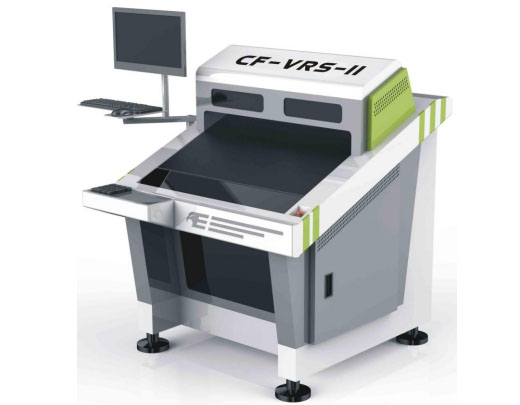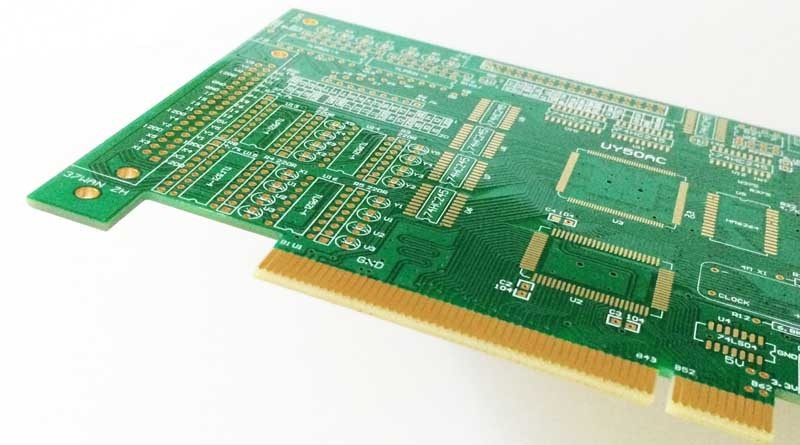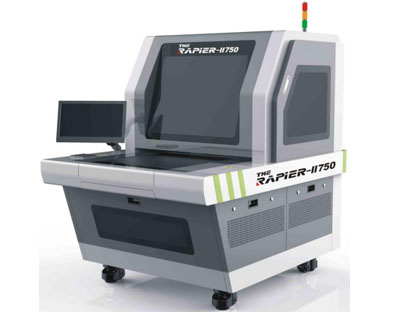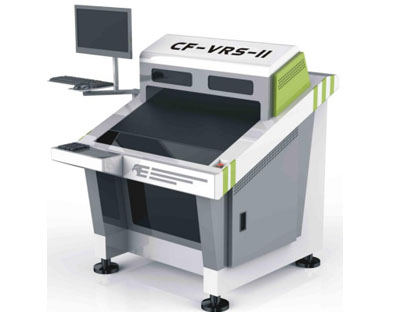Application scenarios of Al:
Artificial intelligence system is mainly composed of three parts: ① information input.Sensing the dynamic physical world through various sensing devices, so as to obtain a large amount of data;② Decision processing.Apply a large amount of data obtained to the model obtained by machine learning for reasoning, prediction or decision-making;③ Execute output.Perform corresponding actions according to the results of reasoning or prediction.In short, it is to establish a prediction model for a large number of input data through machine learning algorithms such as regression and integration, and apply the established model to the actual data set to obtain the prediction results.Al has been widely used in finance, medical treatment, education, public security, transportation, communication, agriculture, meteorology, service industry and other fields.
AOI automatic optical inspection:
The basic concept of Al artificial intelligence is briefly introduced, and the computer vision algorithms commonly used in Al are mentioned. These vision algorithms are also widely used in AOI.AOI automatic optical detection evolved from manual visual inspection. Its working principle is as follows: firstly, the required image feature information is “learned” on the standard CAM data through the visual algorithm, and then the feature is extracted on the scanned image of each PCB by using the model learned on the training set, and the obtained feature image is compared with the standard data,Report the problem points to be detected according to the given rules (detection criteria).Since AOL is a typical application of computer vision, it has the same difficulties as computer vision.
Visual difficulties in AOI:
Information loss in imaging process: when people try to understand an image, previous experience and knowledge will be used for current observation. The process of understanding an image is usually completed unconsciously.Computer vision needs to involve the results and methods of mathematics, pattern recognition, artificial intelligence, psychophysiology, computer science, electronics and other disciplines.Therefore, for dry AOI, a lot of information is lost when the PCB field of dry 3D is projected into 2D space, especially the depth information, such as illumination, material properties, orientation and distance, are reflected as the only measured value – gray value.The projection of the same 2D plane may be generated by an infinite number of possible 3D scene projections. Therefore, the inverse process from 2D to 3D is an ill conditioned process, or ill posed problem. The observation data are not enough to constrain the solution of the problem. Therefore, it is necessary to use a priori knowledge or introduce appropriate constraints.For example, in AOI detection, it is often encountered that there is an open circuit on the scanned image (2D image), but it may actually be a real open circuit, or oxidation points, residual glue and dust on the line (3D scene)
Image occlusion: in computer vision, image occlusion usually refers to light occlusion, physical occlusion, self occlusion or mixed occlusion. Because image occlusion not only loses some target information, but also introduces additional interference.Shielding in AOI means that the real defect is covered by foreign matters (see Figure 5). This short circuit is covered by viscous foreign matters. A little bottom copper can be seen after cleaning with tools, but the foreign matters cannot be completely removed. It needs to be wiped with fiber wipe.Therefore, AOI cannot judge whether there are true defects under foreign bodies through gray changes.
Local window and global view: usually, the analysis operation of image analysis algorithm is the special storage unit (a pixel in the image) and its adjacent units in the memory. When the image can be obtained only from the local view or only some local holes, it is usually very difficult to interpret an image.Ao scans the specified width according to different resolutions and divides it into image blocks of the specified size for processing. Therefore, the detection algorithm of AOL is also local analysis and processing. PCB network analysis will not be added like E-test. Only auxiliary layer will be added in logic processing for functional analysis.

AI application in AOI:
As a key process of quality control in PCB manufacturing, AOI process requires more manual participation in the confirmation process on the maintenance machine. Operators need to classify false defects, repair defects and scrap defects, make corresponding repair or marking actions on the board, and record the quality report at the same time.In these links, the industry is concerned about how to improve production efficiency, reduce production costs (especially labor costs) and reduce quality abnormalities caused by human factors (wiping flowers in the handling process, misjudgment and omission in the confirmation process, etc.).
As mentioned earlier, the application of Al technology is to solve practical problems in a simple and practical way. Unlike today’s intelligent lighting, traditional lighting can turn on / off the light by simply pressing the switch. Intelligent lighting needs to take out the mobile phone to turn on the app, turn on the light and adjust the color brightness, or through voice control, but the process becomes more cumbersome.In the process of integrating al technology into AOI detection, it is necessary to avoid the behavior of Al for Al, but to form a set of valuable schemes.The discussion is divided into three parts: loading and unloading, AOI detection and CVR confirmation.
Loading and unloading:
Loading and unloading includes the loading and unloading of AOL and maintenance machine. More and more manufacturers have implemented automation schemes such as conveyor belt and manipulator to improve efficiency and reduce labor cost. AGV trolley is also considered for material transmission between AOI scanner and maintenance machine.If intelligent robots are used for loading and unloading, the cost and efficiency of intelligent robots need to be evaluated.
AOI detection:
It mainly includes AOI equipment operation and logic operation. The AOI application system has simplified various operations (item number retrieval, alignment, optical correction and application setting), and basically realized one key operation.Some manufacturers use the method of scanning QR code to retrieve the item number to be scanned to ensure fast and accurate.Therefore, according to the current situation, the operation process of AOL does not need to be optimized by Al technology for the time being.If the visual system or speech recognition system is forced to operate the AOI system, the whole process will become more complex.After years of iteration and optimization, AOL’s detection logic has been evaluated according to the training process of deep learning, and has become the optimal detection model.As for the efficiency of logical operation, like al, AOL’s visual algorithm also uses a lot of matrix multiplication and convolution operations, because GPU can efficiently handle matrix multiplication and convolution operations. It can be predicted that GPU will be used to dry AOI more and more to improve the efficiency of logical operation.The subsequent AOI treatment is the key link of Al technology application, that is, the confirmation of Al technology application dry maintenance station, so as to reduce equipment investment and labor cost.
CVR confirmation:
This process is the most concerned part, mainly including false point filtering and true point classification.If the false point rate can be reduced, the board handling, maintenance equipment investment and maintenance labor cost will be reduced accordingly. The false point here does not refer to the logical false point (the defect reported without any abnormality), but the defect that does not want to be reported, such as dust, cohesionless foreign matter and oxidation.According to statistics, such “false points” account for less than 30% and up to 80% of the total defects (this proportion will vary greatly according to different manufacturers’ manufacturing equipment, process control, production environment and other factors).See Figure 6 for the common false dot diagram.

Disadvantages of lifting foreign bodies:
As discussed in the previous visual difficulties, it is impossible to determine the material and height of the foreign body, especially the combination between the foreign body and the plate surface (whether the foreign body has viscosity) or whether there are defects covered under the foreign body, and it is also impossible to accurately distinguish oxidation points, copper surface dents or pinholes only through the gray change of 2D gray map (even RGB channel map of color image).Therefore, in real production, when the operators of the maintenance station encounter such defects, they will use auxiliary tools (compressed air, sticky dust roller, eraser or fiber eraser, etc.) to clean and confirm the defect type.If you want to add al vision system in this link to reduce such false points, you must consider how to overcome the interference of various types of foreign objects, oxidation, etching pattern differences and so on, which requires the system to use 3D samples as the processing object, just as the exception analysis of PCB needs SEM or slice.Considering that the proportion of such defects is as high as 3% ~ 10% (fluctuated according to the dust-free management of AOL workshop, the maintenance cycle of each liquid medicine cylinder of etching line, the cleaning cycle of diaphragm film, plate edge treatment after cutting, etc.), if Al is simply applied on the basis of existing equipment, the result must be that although al technology reduces labor cost,But at the same time, it will seriously affect the production quality.
Prospect of AI for true defect processing:
So what is the prospect of Al for true defect treatment?When CVR operators confirm that the defects are true defects, they usually divide the true defects into repair and scrapping, and these defects can be processed online or offline.On line processing refers to the on-line repair of repair defects during the confirmation process, and the scrapping information of scrapped defects is marked on the board.Offline processing refers to only marking defects or entering defect codes during confirmation, and then transmitting them to other personnel or equipment for repair or scrapping.The author believes that whether Al is applied to false defect filtering or true defect classification depends on the false point rate, defect distribution and PCB board structure of the PCB Factory, and it is necessary to formulate corresponding application rules of artificial intelligence (like specifying driveway for driverless cars), or provide Al with a stronger perception system to ensure that Al can clearly perceive the form of defects,If the lighting system is optimized or 3D imaging is adopted, it is difficult to add new hardware subsystems.It is optimistic to promote the construction of new infrastructure first: import the big data system. The required defect images can be collected through the CDB and VVS system of CIMS. The defect classification on VVS (virtual confirmation system) can not only greatly reduce the equipment investment of CVR, but also label the defect images to prepare for the introduction of Al technology.After adding VVS system and Al technology to CDB database system, CVR only needs to deal with the shortcomings that can not be judged by pictures. After sufficient learning and model iteration (especially the continuous updating of new materials and new processes), all artificial intelligence recognition can be basically realized.
Conclusion:
Although al technology has been widely used in AOI image processing, there are still huge application scenarios and space in the maintenance link. Especially today, with the rapid iteration of a algorithm, the future maintenance system will be an intelligent maintenance system integrating various al algorithms.Of course, these al algorithms can be simple regression and classification algorithms, as well as complex reinforcement learning and structured learning. Strong artificial intelligence and weak artificial intelligence are controversial philosophical issues today.








 Oct. 10, 2020
Oct. 10, 2020 




